Executive Summary
Turkey is attempting to boost its military presence in Idlib province, particularly after the failure of the 2017 Astana de-escalation agreement in Northwestern Syria. As a guarantor state to the agreement, Turkey established several observation posts but had to leave them when Syrian-Russian forces managed to advance to positions beyond the de-escalation lines. To reinstate its position in the province, Turkey signed the Moscow ceasefire agreement with Russia on 5 March 2020. By the new agreement, the Turkish military mobilized forces to over 53 locations in the areas south of Idlib, including the Mount Zawiya region.
In this brief report, Syrians for Truth and Justice (STJ) sheds light on property rightsviolations committed by Turkish forces as they took positions in the Mount Zawiya region, south of Idlib, and the deployment’s impact on civilians’ lives. Over the first three months of 2021, STJ obtained exclusive testimonies from the region’s residents. The interviewed locals said that batches of the mobilized forces were stationed in schools, disrupting classes. Sources added that Turkish soldiers also seized civilians’ homes and agricultural lands against their will, and damaged or uprooted hundreds of trees. While locals repeatedly asked Turkish forces to leave their properties, forces refused to leave or compensate civilians for any property damage.
-
Turkish Forces’ Establish Military Posts Across the Mount Zawiya Region
Turkish forces were deployed to 18 locations throughout Mount Zawiya region. The forces were accompanied by fighters of the opposition’s Syrian National Army (SNA), notably personnel from the military faction Faylaq al-Sham (Sham Legion). The faction’s fighters were assigned the protection of the external components of Turkish military posts and coordination of Turkish forces and civilians when needed. Elaborating on the fighters’ guard task, a military source from the Sham Legion told STJ’s field researcher:
“Groups of SNA fighters are deployed to Turkish military posts. These fighters perform guard services through setting up a defense line (checkpoints) around the posts. The fighters also coordinate relations between Turkish forces and the region’s civilians. In exchange for guard services, each fighter is paid a monthly 600 Turkish Lira (TL).”
In cooperation with local activists, STJ mapped out the locations of Turkish military posts across Mount Zawiya region:
- Kaddoura Military Post: Set up on a high-elevation strategic hill west of the town, the post overlooks the M5 International Highway and is a station for approximately 150 Turkish soldiers and 30 military vehicles.
- Ruwaiha Military Post: Set up on the strategic al-Marqab hill, the post overlooks the entrance to Ariha city and the international highway.
- Nahlah Military Post: Turkish forces were deployed inside the town and took positions in a complex of civilian houses. The military base is a station for 100 soldiers and approximately 15 tanks.
- Sarja Military Post: Turkish forces took positions inside civilian houses and agricultural lands. The post overlooks the international highway, and the town is currently depopulated.
- Shnan Military Post: Turkish forces took positions inside civilian houses. Civilians repeatedly asked the forces to leave their homes, but the soldiers refused.
- Farkaya Military Post: The post is affiliated with the post at Shnan. Turkish forces were deployed inside the town and took positions in civilian houses. The post is a station for about 100 soldiers.
- Maghara Military Post: Turkish forces took positions in agricultural lands. The post is a station for 12 cannons and eight tanks and links posts in Ihsim and Shnan.
- Ihsim Military Post: The central post is set up in the southern neighborhood in Ihsim city. Turkish forces seized a residential neighborhood and a school building. The post is a station for approximately 200 soldiers and dozens of military vehicles.
- Abadeta Military Post: Turkish forces took positions inside civilian houses. The post is a station for about 100 soldiers and 30 military vehicles.
- Kafer Shalaya Military Post: A guard post tasked with protecting the international highway. Turkish forces took positions inside civilian homes, including approximately 50 soldiers with several military vehicles.
- Bassams Military Post: Set up near Bassams village, the post is affiliated with the Tell Ayoup post. The station maintains six tanks and four cannons.
- Tell Ayoup (Josef) Military Post: A large strategic post equipped with anti-aircraft systems.
- Marata Military Post: Turkish forces took positions in Maratah School and Tell al-Shaykh Tamam (al-Shaykh Tamam Hill). The station accommodates 500 soldiers and 25 military vehicles.
- Ballioun Military Post: Turkish forces took positions in the facilities of Ballioun Village Children’s Hospital—which have been abandoned since in late 2019. The post stations 200 soldiers and 30 military vehicles.
- Al-Bara Military Post: Turkish forces took positions south of the town, near the al-Masbah area. It is a station for 300 soldiers and 50 military vehicles.
- Kansafra Military Post: Turkish forces took positions at agricultural lands owned by the Syrian government, near Tell Badran area. The post maintains approximately 100 soldiers and 30 military vehicles.
- Qoqfin Military Post: Set up at the Tell Qoqfin (Qoqfin hill), the post overlooks al-Ghab Plain and Shashabo Mountain.
- Deir Sunbul Military Post: Turkish forces positioned themselves at the Brick Plant south of the town, on the road between al-Bara and Deir Sunbul. The post maintains approximately 25 military vehicles.
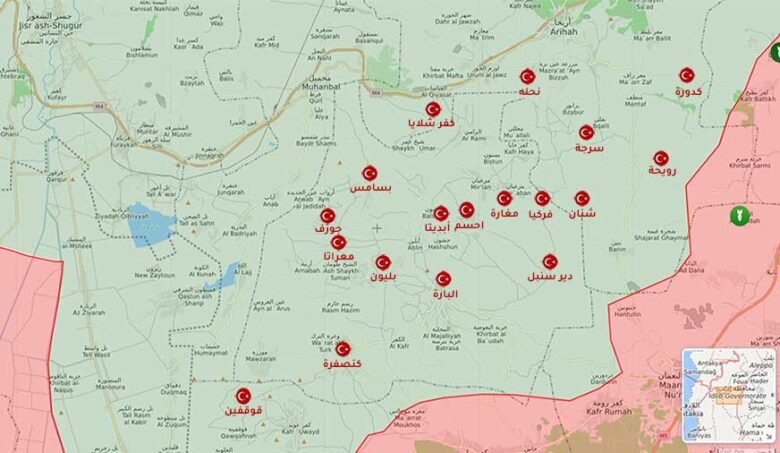
Image 1 – Map locating Turkish military posts in the Mount Zawiya region.
-
The Consequences of Turkish Forces’ Deployment in Mount Zawiya
Under the March-signed Moscow Agreement, the Turkish military turned several civilian structures and agricultural lands into military posts without their owners’ permission. Additionally, Turkish forces ignored owners’ demands that they leave their private properties.
STJ obtained accounts from a group of residents confirming that Turkish forces were stationed in over 30 houses and across dozens of dunums of agricultural lands and severely damaging the properties. Turkish forces destroyed homes, uprooted trees, and bulldozed cultivated lands. Additionally, locals said that forces took positions in at least three schools, obstructing the educational process. Seized education facilities include the Imam An-Nawawi School and Maratah High School, both located in Maratah town. The two schools once accommodated over 1000 male and female students who, after the school buildings were seized, joined classes in the nearby Josef town. One of the town’s residents told STJ’s field researcher:
“On 4 June 2020, Turkish forces entered Maratah town and conducted a reconnaissance operation. On 10 June, these forces returned and seized two schools— the Maratah Elementary School and the Imam An-Nawawi School. They used schools as military bases for over 500 soldiers and 22 military vehicles, including tanks and armored vehicles. When residents protested the mobilization, Turkish forces refused to leave and said that they already handed the town’s coordinates to Russian forces. Turkish forces vandalized the schools. They destroyed disks, boards, storage tanks, and even books.”
Turkish forces were still stationed inside the two schools when STJ compiled this brief report in early April 2021.
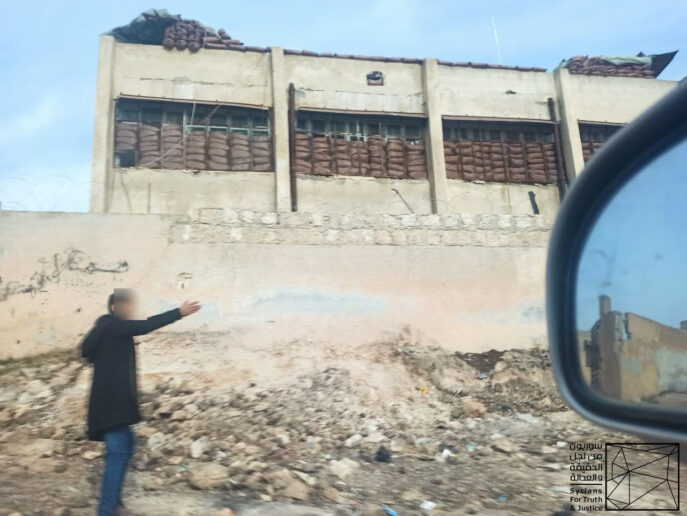
Image 2-The Maratah High School after it was turned into a military post by Turkish forces. Credit: STJ.
A field researcher with STJ recorded similar military use of school facilities by Turkish forces in Almastumah town, administratively affiliated with the Ariha district. However, the researcher failed to obtain information about the date they seized the town’s school nor the number of students affected.
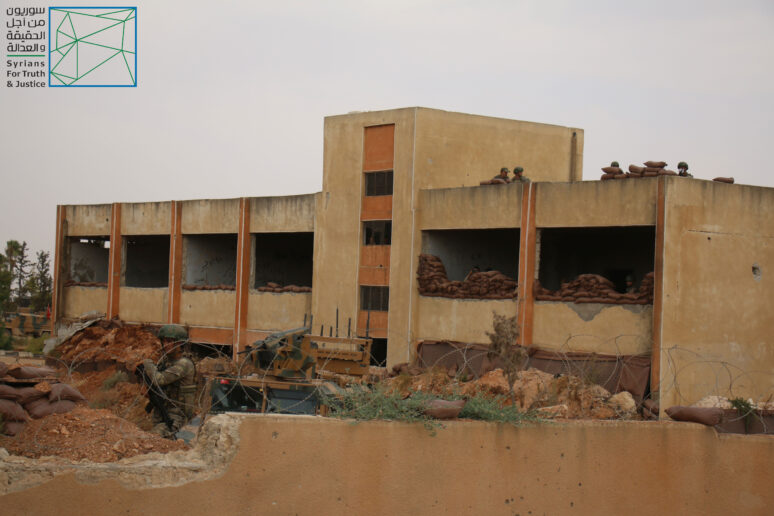
Image 3- Almastumah Town School turned into a military post by Turkish forces. Almost at the center, the Turkish flag appears on the military vehicle. Credit: STJ.
Locals told STJ that Turkish forces also took positions in several homes and at agricultural lands in the villages and towns of Ihsim, al-Bara, and Shnan. Turkish forces vandalized houses, uprooted olive and pistachio trees, and eroded the soil in some farms and established dirt mounds in others, all against the owners’ will. The owners repeatedly asked Turkish forces to leave their homes, but the forces did not respond, nor provided them with compensation for the damages they caused.
In Shnan village, Turkish forces were stationed in the houses of the al-Osman, al-‘Ak, al-Farhoud, and Aslan families where they remain positioned despite the owners’ requests for them to leave .
In Ihsim, an eyewitness said that Turkish forces were deployed to the southern neighborhood of the town, where they seized over 20 houses. Civilians’ homes were turned into soldier housing units when owners were displaced from the town. Upon returning, owners asked Turkish forces to leave their properties, but their demands were ignored. The eyewitness added:
“On 28 February 2020, Turkish forces entered Ihsim town and established an observation post in the southern neighborhood, near the Post Office. They used civilians’ homes for housing, seizing over 20 of the neighborhood’s houses. Owners demanded that their houses be returned; however, the forces replied: ‘We have orders from the Turkish command to take a position in this area. Would you dare ask for your homes if it was the Syrian government that seized them?’.”
The witness added:
“Each house was occupied by 10 to 15 Turkish soldiers. They dismantled windowpanes and interior doors, bulldozed the houses’ gardens, and uprooted mahaleb, cherry, and olive trees. Additionally, they established dirt mounds around houses and set up a guard post within the neighborhood.”
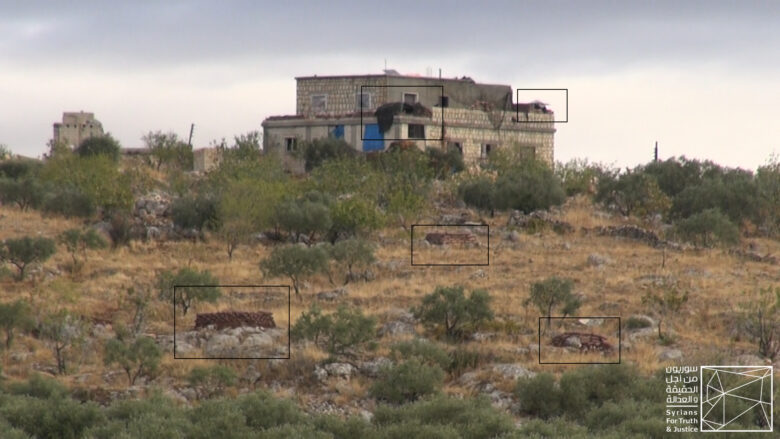
Image 4- One of the houses seized by Turkish forces in the town of Ihsim. Credit: STJ.
In al-Bara town, Turkish forces stationed over 40 dunums of agricultural lands without the owners’ consent. Then, they relocated, uprooting trees and bulldozing farms every time without compensating the farmers for their losses. One of the affected farmers told STJ’s field researcher:
“I am from the al-Bara town in Idlib. I own 19 dunums of agricultural lands south of the town, cultivated with olive, fig, and about 175 fruit trees. In March, Turkish forces entered the town and used my and my neighbors’ piece of land to establish an observation post without informing us or asking for permission. They uprooted trees, bulldozed the soil, and established large dirt mounds around the post. They damaged about 40% of my land. After all the damage they caused, they decided to relocate in December. They set up the new observation post west of the town, across an area of over 60 dunums. They bulldozed the entire area. This was also my land, half of which they seized and annexed for the area dedicated to the new post.”
The witness added:
“I was displaced when they established the new post. When I returned, I went to the main headquarters of the Syrian National Army, located south of Idlib, because the army was accompanying the Turkish forces. I tried to understand what would become of my agricultural lands, and they only told me: ‘stop trying to get your piece of land back. Turkish forces will not leave it.’”
Furthermore, the witness said that Turkish forces caused similar damage to agricultural lands belonging to the Abas, Shartah, al-Daqs, al-Osman, Haboub, and Skaph families. He estimated that at least 73 dunums were affected by Turkish deployment, over 400 olive, fig, and fruit trees were uprooted, and 16 dunums of agricultural lands were bulldozed, which were planted with about 350 trees. He added that all the trees were uprooted, while soil from the bulldozed land was moved from the site of the former observation post to the location of the newly established one, where it was used for establishing a dirt mound.

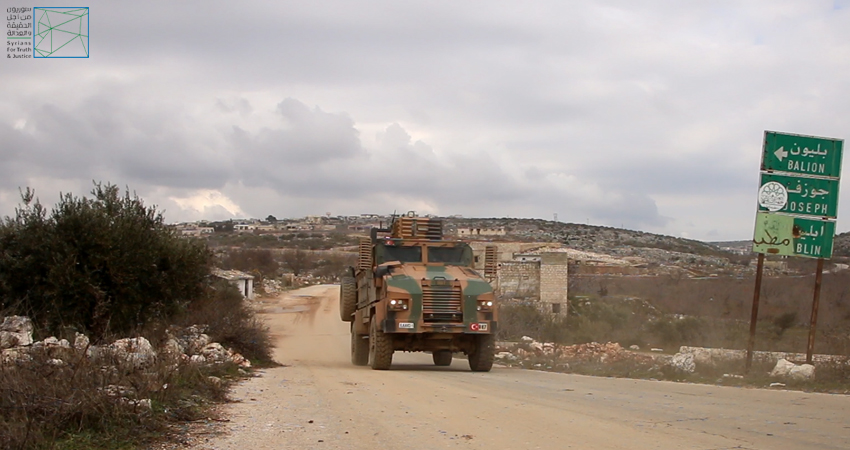
1 comment
[…] Human Rights Journalism […]